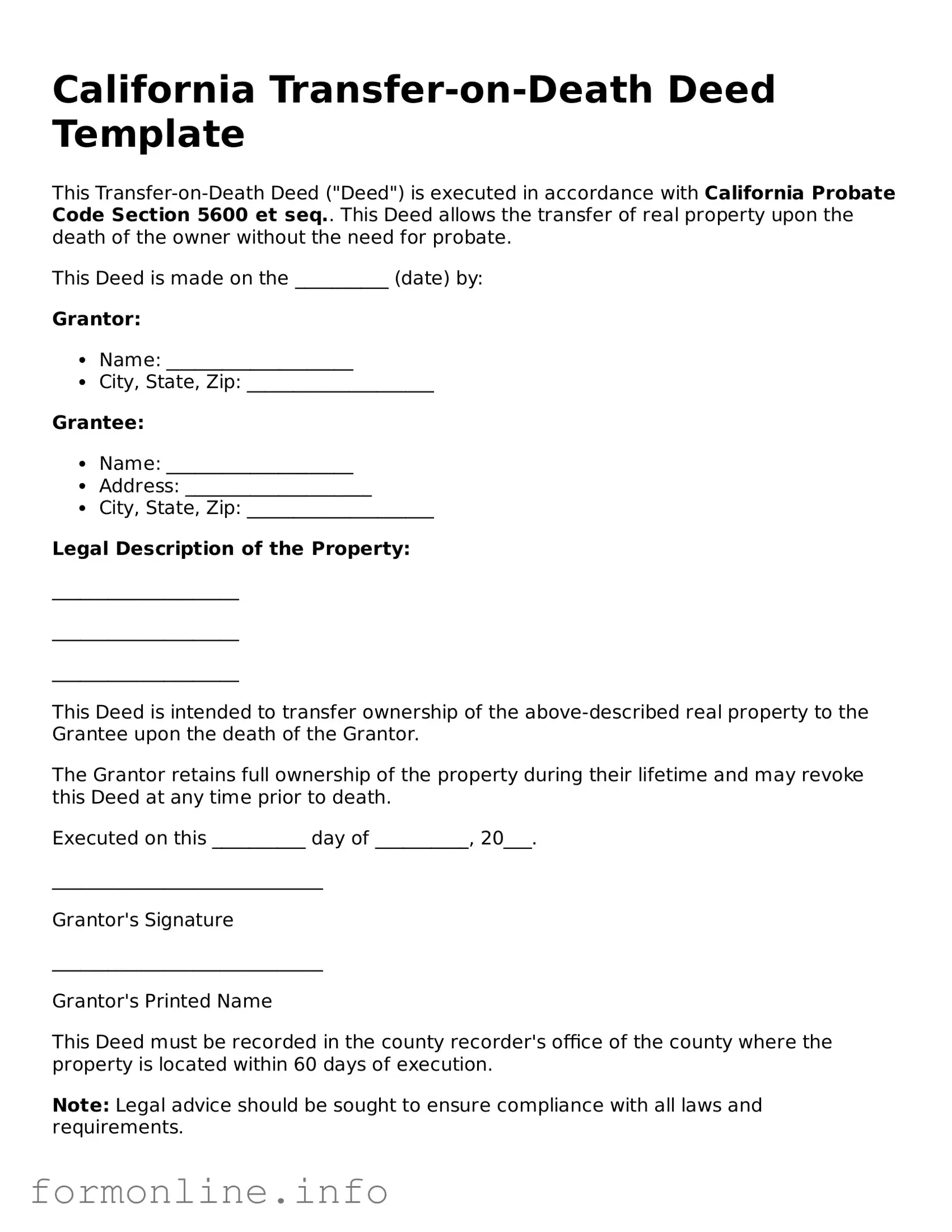California Transfer-on-Death Deed Template
This Transfer-on-Death Deed ("Deed") is executed in accordance with California Probate Code Section 5600 et seq.. This Deed allows the transfer of real property upon the death of the owner without the need for probate.
This Deed is made on the __________ (date) by:
Grantor:
- Name: ____________________
- City, State, Zip: ____________________
Grantee:
- Name: ____________________
- Address: ____________________
- City, State, Zip: ____________________
Legal Description of the Property:
____________________
____________________
____________________
This Deed is intended to transfer ownership of the above-described real property to the Grantee upon the death of the Grantor.
The Grantor retains full ownership of the property during their lifetime and may revoke this Deed at any time prior to death.
Executed on this __________ day of __________, 20___.
_____________________________
Grantor's Signature
_____________________________
Grantor's Printed Name
This Deed must be recorded in the county recorder's office of the county where the property is located within 60 days of execution.
Note: Legal advice should be sought to ensure compliance with all laws and requirements.
